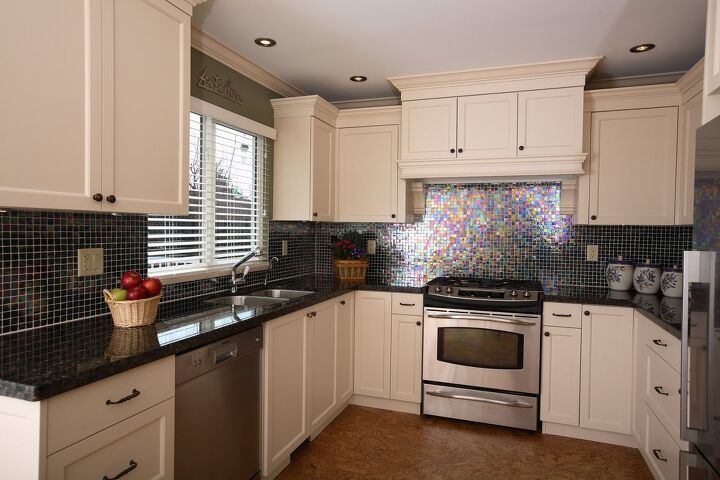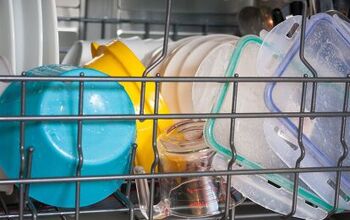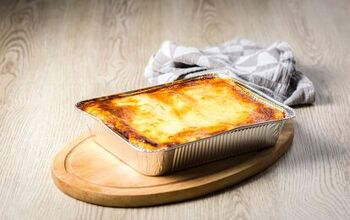Can You Put A Dishwasher Next To An Oven? (Find Out Now!)

Kitchen renovations are among the top home improvement projects. In many cases, the cost of upgrading a kitchen is recovered in the increased value of your home. Kitchen renovations often involve re-arranging the appliances for better workflow. One question that comes up often is about the placement of a dishwasher next to an oven.
Major appliance manufacturers recommend that dishwashers installed next to a free-standing, slide-in or drop-in range be placed at least 2 inches away. These manufacturers recommend dishwashers not be installed next to a wall oven mounted under the counter. A dishwasher installed next to a wall oven should be at least 24 inches away.
Before installing your new dishwasher next to an oven, always check the manufacturer’s specifications for minimum clearances. Maintaining the warranty that comes with your new dishwasher depends on a proper installation that meets the specifications. You might consider another arrangement of the appliances in your kitchen if you have clearance issues.
The Do’s and Don’ts of Dishwasher Placement
When deciding where to place your appliances in a new kitchen renovation, certain principles or rules should be understood. Following these recommendations will help avoid problems that could lead to the premature failure of a major appliance. These suggestions are not carved in stone but come from top kitchen designers with years of experience.
Mind the Kitchen Triangle
Most kitchen designers use the triangle concept when designing kitchens. These three are the most used places in a kitchen. By necessity, dishwashers are usually placed next to the sink. The need for a water connection, a drain connection, and an electrical connection for the dishwashers almost mandates this placement.
When designing your new kitchen arrangement, the distances between these three areas are critical. Kitchen designers try to keep the sum of the length of each leg of the triangle between 10 feet and 25 feet. Less than 10 feet makes the workspace too confined for more than one person. More than twenty-five feet creates long travel distances that can be tiring and less efficient.
Placing a dishwasher too far from the kitchen sink creates problems with plumbing and drains in most homes. In addition, since dirty dishes often end up in the sink before going into the dishwasher, having the dishwasher next to the sink just makes good sense.
Heat and Humidity Can Cause Trouble
One thing to consider about what is placed next to a dishwasher is the heat and humidity most dishwashers produce. Most residential-style dishwashers vent the heat and humidity they produce toward the front of the machine. This helps eliminate some of the problems caused by the excess heat and humidity.
Venting out the front keeps heat and humidity from under your cabinets and countertops. Residential dishwashers are sealed and insulated to control heat and humidity. Mold and mildew growth can occur if the heat and humidity escapes back under your countertops and cabinets.
Manufacturers Specifications Must Be Met
Every new major appliance, including dishwashers, come with installation instructions. These instructions detail the clearances that must be maintained for the proper installation and operation of your dishwasher. This is important to maintain the warranty on your new appliance.
Keep these specifications and requirements in mind when installing your new dishwasher or planning your new kitchen layout.
Refrigerators and Dishwashers Aren’t Good Neighbors
Most dishwasher and refrigerator manufacturers advise against placing a dishwasher adjacent to a refrigerator. The heat and humidity that a dishwasher creates and vents into the kitchen can cause refrigerator problems. Excess heat and humidity places more stress on the refrigerator and can cause premature failure.
Watch Out for Corners
One of the greatest frustrations we hear from homeowners is the problem with dishwashers, ovens, and corners. Some builders place the dishwasher between the sink and the corner of the cabinets. They place the oven or range just on the other side of the corner. This can cause conflicts and make it impossible to open the dishwasher and the oven simultaneously.
This may seem like a minor problem, but many homeowners complain about this problem more than any other. Moving dirty pans from the oven to the dishwasher can become a multi-step process if you can’t open both appliance doors at once.
Do I Need to Add a Heat Shield Between my Dishwasher and Oven?
In most cases, if you can maintain a two-inch space between your oven and the dishwasher, you are safe. This applies to installations of drop-in ranges and slide-in ranges, and freestanding ranges. If you install a wall-mounted oven under a countertop, you should consult the manufacturer’s recommendations for both appliances. Most manufacturers recommend that at least 24 inches of clearance between the oven and the dishwasher.
Does It Make Sense to Put a Wall Oven Over a Dishwasher?
Absolutely not. As the dishwasher operates, it vents heat and humidity that can arise and cause the wall oven above many problems. Typically, you would need 24 inches of separation between the dishwasher and the wall-mounted oven. This would put the oven at a height that would make it difficult and even dangerous to use.
Most manufacturers would consider mounting an oven above a dishwasher an unacceptable practice. This would void the warranty on both the oven and the dishwasher.
Adding a Second Dishwasher
Many families consider adding a second dishwasher to their kitchens during a renovation. Large families or those that entertain frequently find a second dishwasher convenient and efficient. However, finding the space in your kitchen to add that second dishwasher can be a challenge.
When things get tight in the kitchen or the kitchen space is unusual, your best option may be to find a good kitchen designer. A kitchen designer can help with the placement of the appliances for the most efficient use of your kitchen space.
Finding a Place for Everything and Putting Everything in its Place
The key to designing a functional kitchen that is a delight to work in is as much an art as it is a science. Balancing the workspace and the specification for appliance placements creates even more challenges. Getting things arranged for the most efficient and safe kitchen design is the goal.
Related Guide

Dennis is a retired firefighter with an extensive background in construction, home improvement, and remodeling. He worked in the trades part-time while serving as an active firefighter. On his retirement, he started a remodeling and home repair business, which he ran for several years.
More by Dennis Howard

























![Standard Dining Room Table Dimensions [for 4, 6, 8, 10 and 12 People]](https://cdn-fastly.upgradedhome.com/media/2023/07/31/9074335/standard-dining-room-table-dimensions-for-4-6-8-10-and-12-people.jpg?size=350x220)

